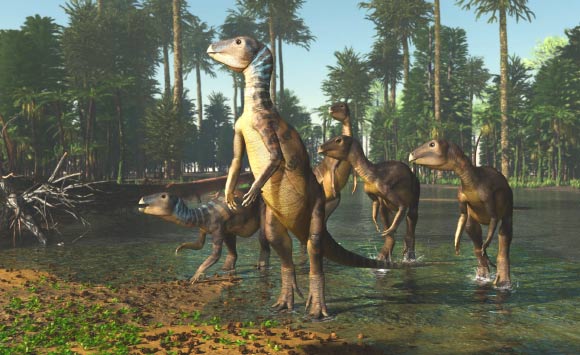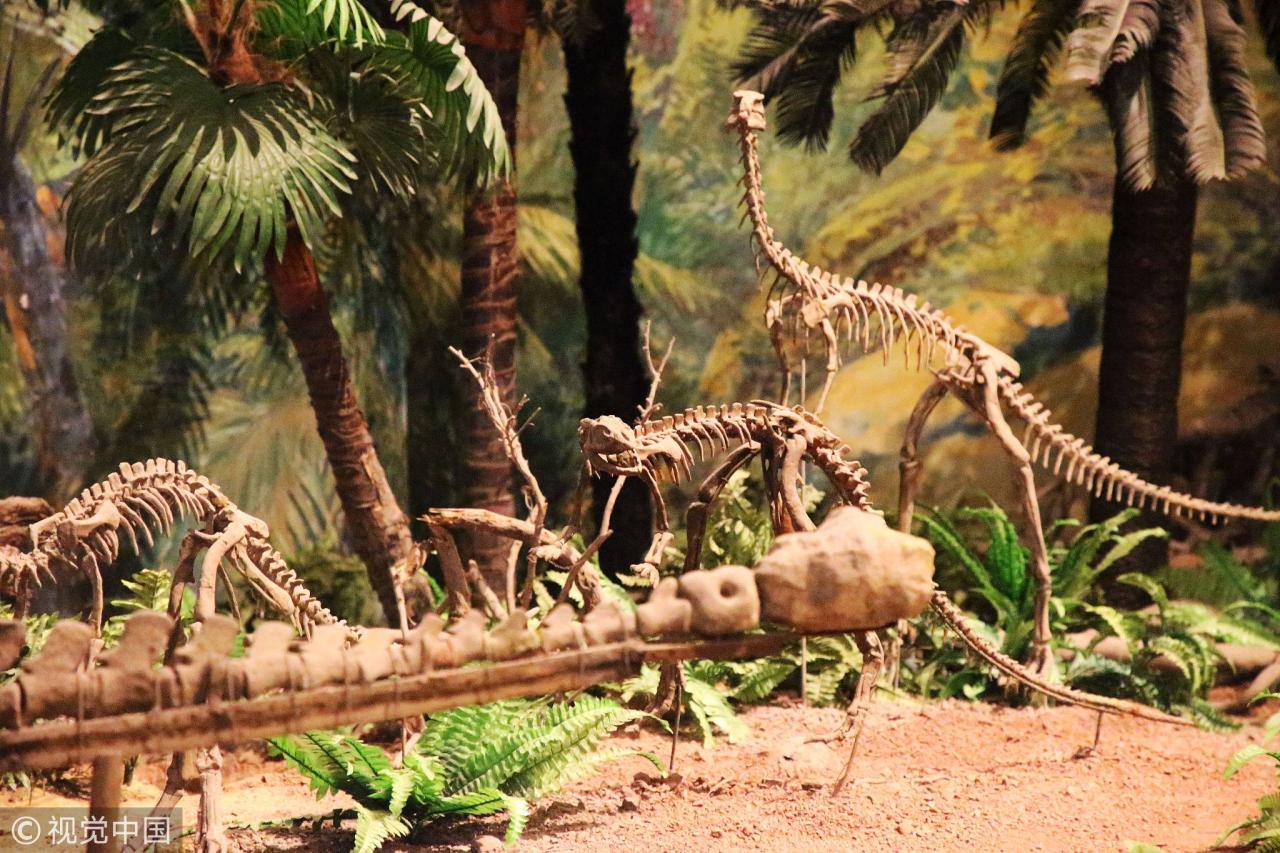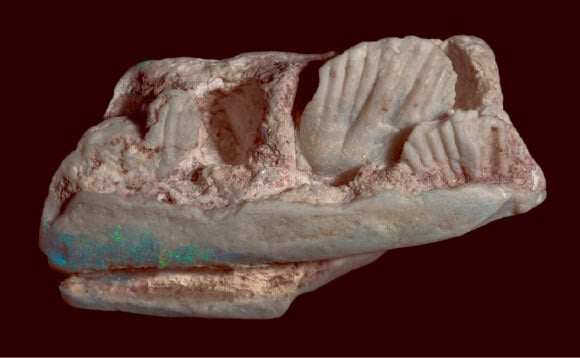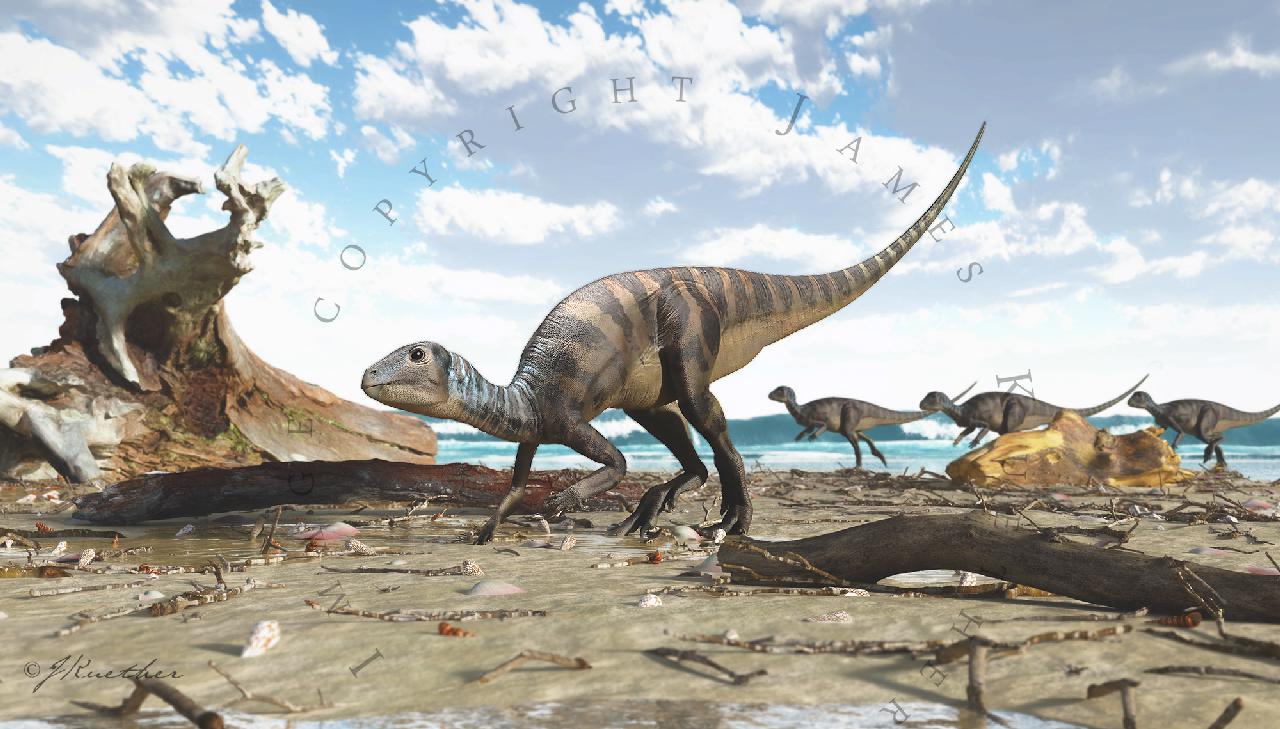Paleontologists in Australia have found a fossil fragment from a new species of ornithopod dinosaur that walked the Earth approximately 100 million years ago (Cretaceous period).

An artist’s impression of Weewarrasaurus pobeni. Image credit: James Kuether.
The new Australian dinosaur, named Weewarrasaurus pobeni, was about the size of a large dog.
The ancient creature was an ornithopod dinosaur, part of a group of small plant-eating species that moved around on two legs and that were particularly abundant on the Cretaceous floodplains of eastern Australia.

A fragment of the jawbone of Weewarrasaurus pobeni was found deep in an underground mine at the Wee Warra locality close to the Grawin/Glengarry opal fields, approximately 25 miles (40 km) southwest of Lightning Ridge, central-northern New South Wales.
The fossil was analyzed by a team of paleontologists from the Australian Opal Centre and the Universities of New England and Queensland.
“Like all fossils from the Lightning Ridge opal mines, the lower jaw of Weewarrasaurus pobeni is preserved in opal,” said University of New England’s Dr. Phil Bell and co-authors.
“Lightning Ridge is the only place in the world where dinosaur bones routinely turn to opal.”

The lower jaw of Weewarrasaurus pobeni. Image credit: Bell et al, doi: 10.7717/peerj.6008.
Lightning Ridge is a world-class fossil resource because it preserves a unique suite of Cretaceous fauna.
“If these fossils were in surface rock, like those found in China and Mongolia, it would be an absolute treasure-trove,” Dr. Bell said.
“Unfortunately, the fossil remnants we see are almost always part of mining spoil, because they sit in rock strata that lie up to 100 feet (30 m) underground.”

“The mining process breaks the fossils into fragments — but on the other hand, we would never get to see even those fragments if it wasn’t for mining.”
“The jawbone of Weewarrasaurus pobeni is a supremely rare and unlikely discovery,” said Dr. Jenni Brammall, manager of the Australian Opal Centre.
“This incredible little object is both the 100 million-year-old jaw of a new dinosaur species and a precious gemstone.”
Source: sci.news








